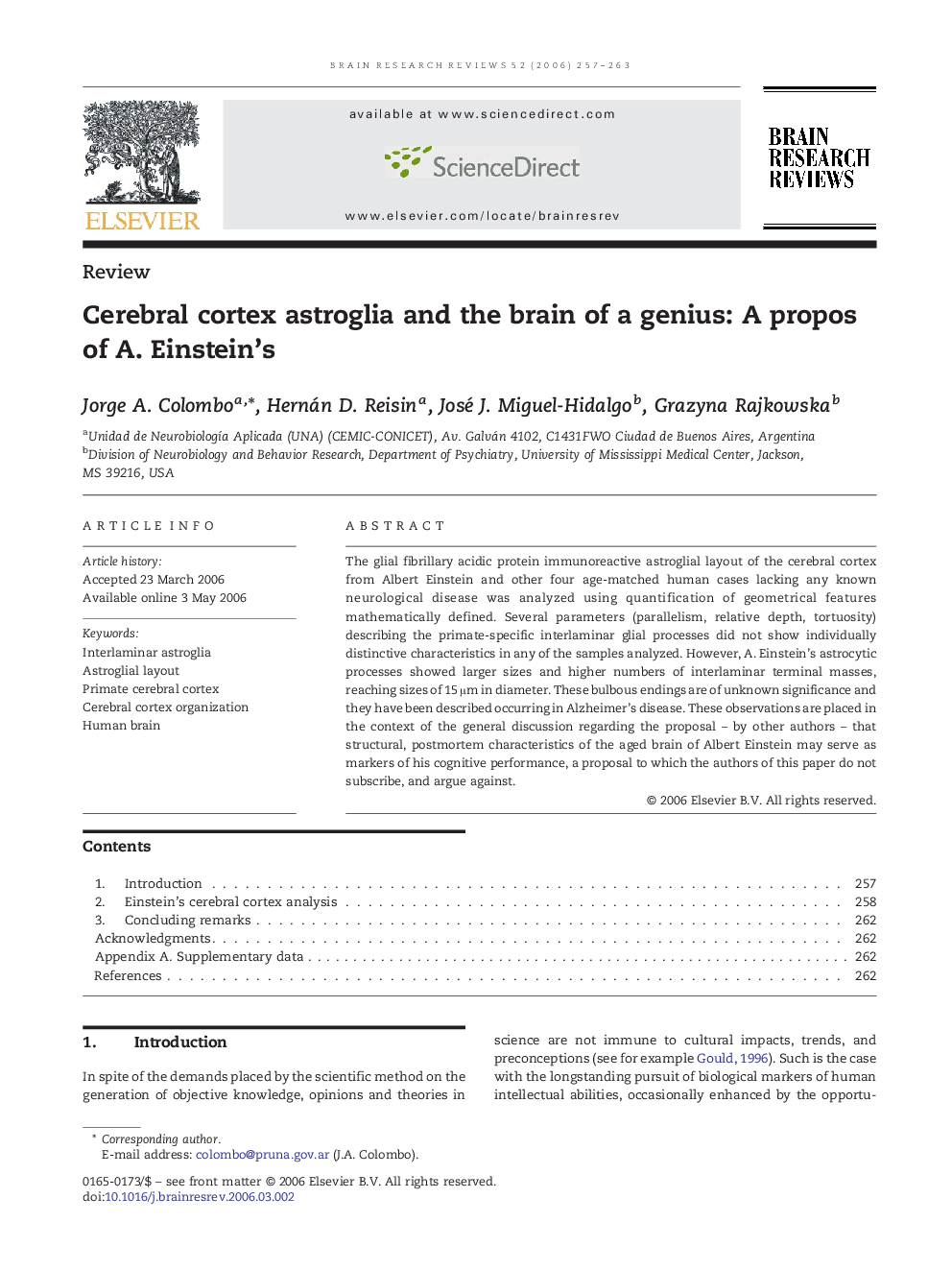| Article ID | Journal | Published Year | Pages | File Type |
|---|---|---|---|---|
| 4334089 | Brain Research Reviews | 2006 | 7 Pages |
The glial fibrillary acidic protein immunoreactive astroglial layout of the cerebral cortex from Albert Einstein and other four age-matched human cases lacking any known neurological disease was analyzed using quantification of geometrical features mathematically defined. Several parameters (parallelism, relative depth, tortuosity) describing the primate-specific interlaminar glial processes did not show individually distinctive characteristics in any of the samples analyzed. However, A. Einstein's astrocytic processes showed larger sizes and higher numbers of interlaminar terminal masses, reaching sizes of 15 μm in diameter. These bulbous endings are of unknown significance and they have been described occurring in Alzheimer's disease. These observations are placed in the context of the general discussion regarding the proposal – by other authors – that structural, postmortem characteristics of the aged brain of Albert Einstein may serve as markers of his cognitive performance, a proposal to which the authors of this paper do not subscribe, and argue against.
